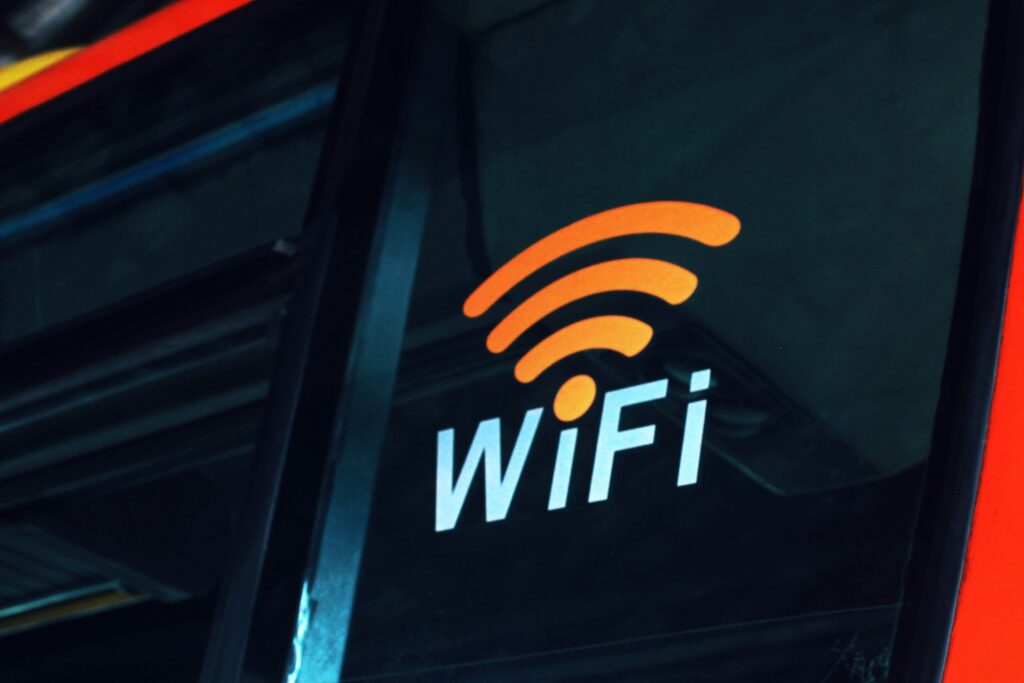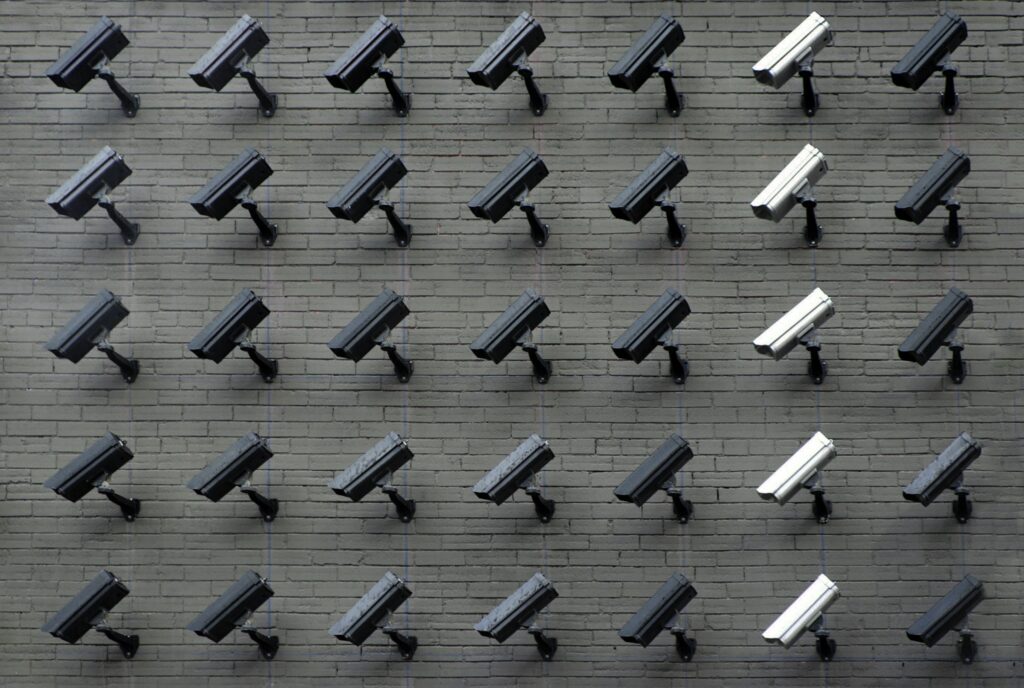2. Secure Your Wi-Fi: Start with the Basics
Your Wi-Fi network is the gateway to everything online in your home. Making a few key changes can significantly lower the risk of unauthorized access and cyber threats.
Rename Your Network (SSID)
Your router comes with a default network name known as the SSID. Often, this name reveals the brand or model of the router, giving hackers a head start. Here’s what to do:
- Change the default SSID to something generic
- Avoid using personal information like your name or address
- Use a name that doesn’t attract attention, such as “HomeNetwork245”
Use Strong Encryption Settings
The type of encryption your router uses determines how easily outsiders can intercept your data. Ensure you’re using the most secure standards available:
- WPA3 is the latest and most secure option
- If WPA3 is not available, WPA2 is still acceptable
- Avoid outdated options like WEP or unsecured networks
Set a Strong, Unique Password
Using a default or weak password makes your network an easy target. Take the time to create one that’s secure but memorable:
- Avoid obvious choices like “password123”, “admin”, or your birthdate
- Use a mix of letters, numbers, and special characters
- Create a passphrase that’s long but easy to remember, such as “RiverTrees89goFast”
Regularly reviewing and updating your Wi-Fi settings keeps your network ahead of potential threats. It’s a simple yet powerful first line of defense.
Smart homes, smart gadgets, smart everything. The trade-off? Every connected device is a wide-open door if you don’t lock it properly. From smart speakers to security cams, most of these tools are sold with convenience first and protection last.
The average setup is full of cracks. Weak default passwords, outdated firmware, open ports — these are low-hanging fruit for anyone looking to sneak in. Even your smart fridge can be a backdoor into your network if it’s not secured. And it’s not just hackers playing around anymore. Data brokers, ad tech, surveillance… it adds up fast.
Security isn’t optional. It’s the price you pay for tapping into a connected life. The more frictionless your setup feels, the more you should question what’s operating quietly in the background. If you’re not thinking like a systems admin, you’re basically handing out free passes.
Smart Gear for Lean Creators
Firmware: Not Flashy, But Functional
While it may not be the most exciting topic, firmware updates are essential for keeping your gear running smoothly. These updates often resolve underlying bugs, improve hardware performance, and even unlock new features you didn’t know were possible.
- Firmware keeps your equipment reliable and compatible
- Fixes common glitches and performance issues
- Can sometimes extend the lifespan of your gear
Automate Your Updates
Manually checking for firmware updates can be time-consuming and easy to forget. Many modern devices and apps offer automated or semi-automated update options—take advantage of them.
- Set devices to auto-update where possible
- Use companion apps or desktop software to keep track
- Schedule monthly check-ins for gear that doesn’t update automatically
Know When to Say Goodbye to Old Gear
Older equipment that no longer receives software or firmware updates can become a liability. Unsupported devices may have degraded performance or even security risks. In 2024, efficiency and reliability are king.
- If your gear is no longer supported, consider an upgrade
- Look for lightweight, modular tools that will last
- Invest wisely: quality gear pays off long-term
Create a Guest Network for Your Smart Gadgets
Your smart home devices don’t need access to everything on your main network. Setting up a dedicated guest Wi-Fi for them is a strong first step in locking down your digital living space. Think of it as drawing a clear boundary—your lights, speakers, and doorbells stay on one side, your laptops and phones on the other. If something goes wrong with one of those gadgets, the damage is boxed in.
This kind of segmentation limits how far an intruder can move if a device gets compromised. It’s the difference between someone jiggling your doorknob and someone walking straight into your living room.
Bonus tip: Some routers support VLANs (virtual local area networks). If yours does, take the time to set one up. It’s a more advanced version of the same idea—prioritizing traffic, isolating risks, and keeping everything in its right place.
Strengthen Your Digital Security
As creators become more connected—and more visible—protecting your online presence is essential. From your email accounts to smart home devices, every connected service can be a potential entry point for bad actors. In 2024, digital security is not optional, especially when your livelihood depends on staying online.
Step 1: Enable Two-Factor Authentication (2FA)
Two-factor authentication (2FA) is one of the easiest and most effective ways to secure your accounts. If a platform supports it, turn it on.
- Adds a second verification step beyond your password
- Protects against unauthorized access, even if your credentials are leaked
- Recommended for social media logins, cloud storage, and email accounts
Step 2: Secure Your Router and Smart Platforms
Your router is the front door to your entire digital life at home. Smart devices like Google Home, Alexa, and even smart TVs are convenient—but can be vulnerable without proper settings.
- Change default login credentials on your router
- Set up a separate guest network for visitors
- Regularly update firmware to patch security flaws
- Review connected smart devices and disable unused ones
Step 3: Use a Password Manager
Managing passwords manually increases risk. A password manager helps you navigate today’s complex digital landscape safely.
- Generates strong, unique passwords for each login
- Stores and encrypts credentials securely
- Saves time logging into platforms while keeping your data safe
Taking these actions not only safeguards your creator accounts but also reinforces the trust your audience places in you. Don’t wait until a breach happens—be proactive about staying secure.
Lock Down Your Gear: Basics That Still Matter
Too many creators are still leaving their setup wide open. Default usernames and passwords? That’s basically handing hackers an invitation. First step: change your login details the moment you set up any gear—camera, router, or editing rig.
Next, update device names. “LivingRoomCam” is a lot more helpful (and secure) than something like “IPCAM87262.” Clear labels help you manage your hardware and recognize unusual activity quickly.
Finally, go through your devices and disable anything you’re not using. Remote access, UPnP, auto-updates that run over open connections—these features often do more harm than good if you’re not monitoring them. Keep what you need. Kill the rest.
Vlogging starts with good content, but keeping your gear secure is what keeps you in the game.
Locking Down Your Smart Tech Setup
Your router is the front door to your whole digital home, and too many people leave it wide open. Start with the basics: log into your router dashboard every week or two and look at the connected devices list. If something shows up that you don’t recognize, assume it’s not supposed to be there.
Next, don’t rely on default security. Use a security suite that actively monitors smart devices. These tools can flag odd behavior on everything from your thermostat to the baby cam—stuff you’d never notice on your own.
Finally, pay attention to alerts. Even if you’re not a tech expert, just reading event logs can help you spot patterns or catch something weird early. Building awareness is half the battle. Small habits here make a big difference.
If you’re adding smart gadgets or controllers to your setup, be careful. Avoid random third-party apps or gear that don’t come from trusted sources. They might work fine today but could open up security risks tomorrow.
When you’re connecting anything new, take a second to check the privacy policy. Even scanning the first few lines can tell you if your data is being shipped off to a server you’ve never heard of.
Once a year, walk through your network layout. What devices are connected? Which ones are outdated or unpatched? Tech evolves, and so should your defenses. That old smart plug collecting dust? Probably time to retire it.
For more daily tech security upgrades, check out Everyday Automation: Easy Tech Hacks to Simplify Your Life.
Securing your smart home isn’t a one-time task. It’s a mindset. As more devices connect to your daily routine, threat surfaces expand—quietly but constantly. Treating digital safety as a core part of your lifestyle isn’t optional anymore. It’s equal parts maintenance and awareness. From updating firmware to managing who has access, every choice counts. Getting lax for a week can mean a camera feed exposed or a thermostat hijacked. But when you make security routine—like locking the front door—it fades into the background. Quiet, efficient, unnoticed by anyone but you. And that’s the point. Build security in, not around the edges.



 Jorlina is the co-founder of flpsymbolcity, specializing in digital symbol mapping and typographic structure. She explores how system fonts, emoji libraries, and symbol standards evolve across devices. Through her strong analytical writing, she brings clarity to how symbols connect global users in the digital space.
Jorlina is the co-founder of flpsymbolcity, specializing in digital symbol mapping and typographic structure. She explores how system fonts, emoji libraries, and symbol standards evolve across devices. Through her strong analytical writing, she brings clarity to how symbols connect global users in the digital space.

